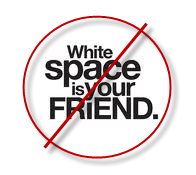Today, I hide(remove) the default blogger's Navigation bar. The white space area that above the blog header is huge. I don't want this area. This space often interferes with the blog's design by pushing down the header.
It can be utilized to display - ads, navigation menu, social networking buttons and much more. So why waste it?
Here's
how you get rid of the empty space left after removing the Navigation bar:
2. Go to Template -> Click Edit HTML
3. Using Ctrl+F search for this tag:
End of my Sharing .
Read More »
It can be utilized to display - ads, navigation menu, social networking buttons and much more. So why waste it?
Here's
how you get rid of the empty space left after removing the Navigation bar:
Steps
1. Log in to your blogger account2. Go to Template -> Click Edit HTML
3. Using Ctrl+F search for this tag:
</head>4. Now add the following code just above the </head> tag:
<style type='text/css'>5. Preview the template before saving.
.content-inner
{
margin-top: -40px !important;
}
</style>
End of my Sharing .







